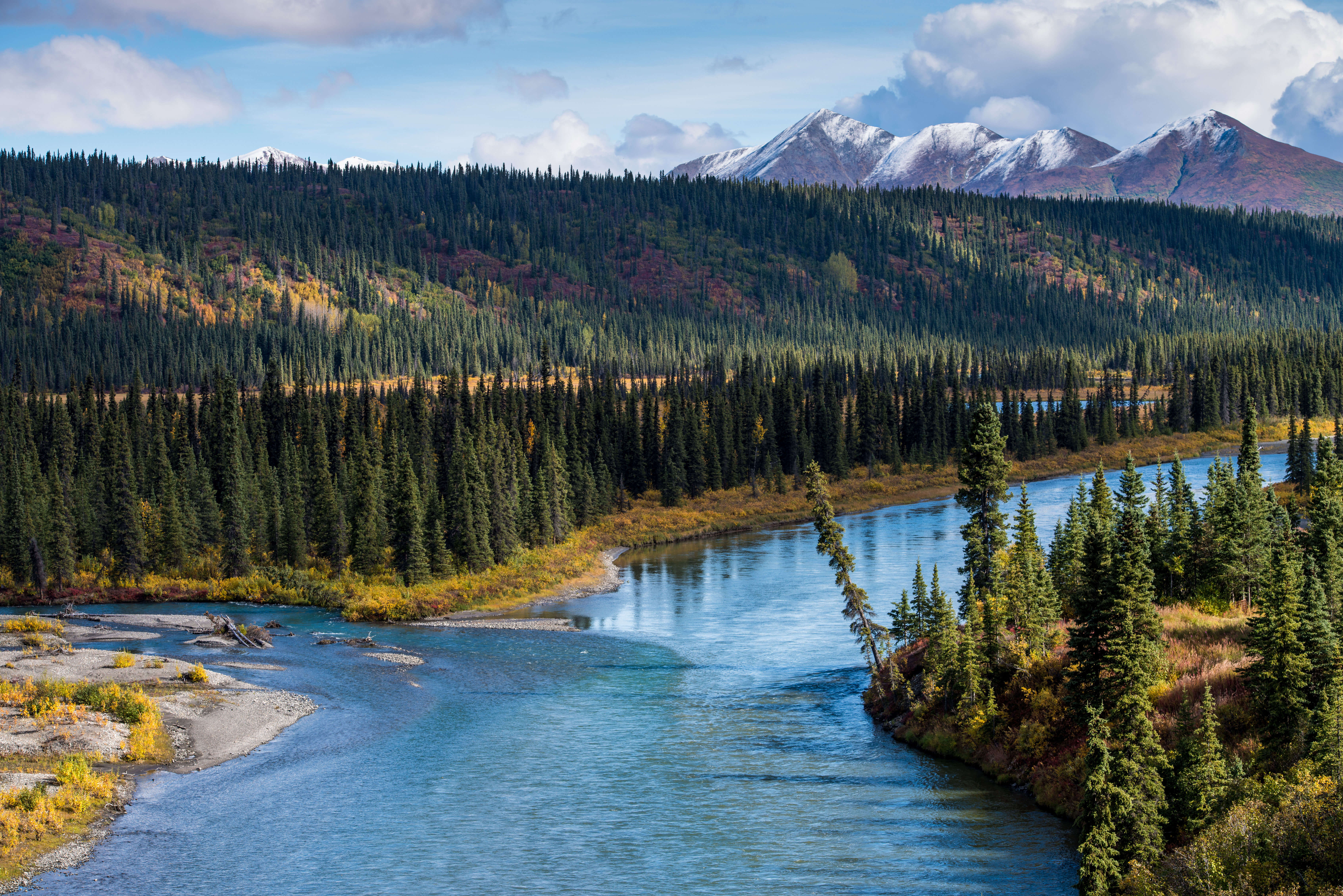Rainforests and the forests that make up the great boreal forest are on opposite ends of the planet from one another, yet they share a number of similar characteristics. Both are home to multitudes of animal and plant species, both provide resources and jobs for local economies, and both help to maintain the balance of the planet’s ecosystems.
Rainforests
Rainforests cover only 6% of the Earth, yet they are home to over half the planet’s plant and animal species. Found in Central America, South America, Central Africa, Madagascar, and Australasia, these amazing forests are home to 30 million different plants and animals. Rainforests are also a source of a number of consumer products that are used daily around the world, such as chocolate, sugar, cinnamon, rubber, pineapples, and ingredients for a number of medicines. In fact, a large percentage of cancer fighting drugs are derived from rainforests. Unfortunately, the sustainability of rainforests is threatened by logging and farming and the destruction that they cause. Across the globe, rainforests are disappearing at a rate of 6,000 acres per hour. That is equal to 4,000 football fields and adds up to approximately 32 million acres of rainforest each year. Industries like cattle farming and palm oil plantations are responsible for clear cutting vast amounts of rainforest to make room for livestock and oil palms. Rainforests are found in poorer countries, and locals must regularly struggle to make enough money to support themselves and their families. Sadly, this often means that rainforests are sacrificed because other options for income are scarce.
The Rainforest Alliance
The Rainforest Alliance is a non-profit organization that helps to conserve biodiversity and promote sustainable livelihoods for individuals living in rainforest nations. Working with locals, the Rainforest Alliance has certified over 155 million acres of vulnerable forest, effectively protecting great numbers of plants and animals. Farms operating within certified forests have agreed to maintain healthy soil, protect ecosystems, and decrease the amount of water, energy, and chemicals that are used in operations. The Rainforest Alliance logo is displayed on products that are sourced from sustainable producers located in rainforest regions.
Forest Stewardship Council
The Forest Stewardship Council (FSC) is an international non-profit organization dedicated to promoting responsible management of the world’s forests. FSC has partnered with other well-known environmental non-governmental organizations including the World Wildlife Fund and Greenpeace to define best practices for forestry which allow local economies to prosper without risking the longevity of forests worldwide. In North America, 70,000 hectares have been certified by the Forest Stewardship Council. FSC certificates are given to owners or managers of forests, in most cases governments, who have completed an assessment which considers a number of aspects of operations such as environmental considerations and respect of indigenous peoples. Certificates are valid for five years and are reassessed annually.
For the Consumer
Climate change and industrialization are the two main causes for the degradation of both tropical rainforests and northern boreal forests. As consumers, the best way to limit your impact on these amazing forests is to choose items that are FSC or Rainforest Alliance certified. Almost all products that are made from wood or other forest products are available with the FSC label. Rainforest Alliance products are easily recognizable by their seal which depicts a green jungle frog. Products bearing this seal contain ingredients from a certified Rainforest Alliance farm that has been managed to promote conservation and sustainability.
Boreal Forest
There are four major forest zones: tropical, subtropical, temperate, and boreal. Rainforests are located in the tropical zone. Boreal forests are found in more northerly locations like Canada and Russia. The boreal biogeoclimatic zone is one of the largest zones in the world and covers over 550 million hectares in Canada alone. Like the rainforests, boreal forests are home to a wide array of plant and animal species, and other organisms like insects and fungi. In Canada, the boreal forest stretches along the northern half of the country, all the way from the Yukon in the west to Newfoundland and Labrador in the east. Made up of cold hardy pine, spruce, larch, poplar, fir, and birch, the boreal forest isn’t strictly trees. It features lakes, rivers, wooded areas, wetlands, and naturally treeless areas. It is the largest source of pristine fresh water in the world. The Canadian boreal forest plays an enormous role in regulating the climate. It contains 300 years’ worth of Canada’s greenhouse gas emissions and is vital in purifying both air and water. In addition, the boreal forest is home to 2.5 million Canadians who rely on it for economic and rural stability.
Sadly, like tropical rainforests, the boreal forest is at risk. Increasing global temperatures have caused the temperature of the Canadian boreal forest to rise over two degrees in the last century. Much of the ground in the boreal forest is covered in permafrost, a thick layer of soil that remains frozen throughout the year. Rising temperatures have caused the degradation of permafrost, which is accompanied by decline and re-establishment of the forest. This decline releases carbon and methane that was previously stored in the trees into the atmosphere, contributing to climate change. Temperature increases allow insect populations to prosper, an example of which is the Mountain Pine Beetle, an insect that has devastated many British Columbia forests and is expected to continue to move eastward. Further, as climate change progresses, changing distribution of precipitation has caused more drought and more wildfires than in previous years. Not only do these fires destroy large sections of the forest, they also release massive amounts of greenhouse gases into the atmosphere.
Like rainforests, the boreal forest faces direct threats from industry; logging, oil and gas, and resource extraction companies destroy the forest and habitats for vulnerable animals like caribou, moose, elk, and wolves.
In May of 2010, the Forest Products Association of Canada (FPAC) and its 19 member companies, along with seven Canadian non-governmental environmental groups, founded the Canadian Boreal Forest Agreement. In return for suspending operations on 29 million acres of caribou habitat, environmental activists agreed to cease boycotts of FPAC companies. While the agreement had good intentions, independent reviews have uncovered significant barriers to the goals that were originally outlined by the participating parties. After two years of existence, only one action plan has been completed. While the success of the Canadian Boreal Forest Agreement is debatable, on the whole, there are greater protection efforts being made. Since 2007, the amount of government protected forest has doubled to 12% or 708,000 kilometres. Additionally, 460,000 kilometres of forest are being harvested using sustainable methods. Manitoba and Ontario are both taking ownership of the boreal forest located in their borders, despite pressure from resource companies. Conversely, the Yukon and Quebec have been criticized for their failure to take protective measures.


